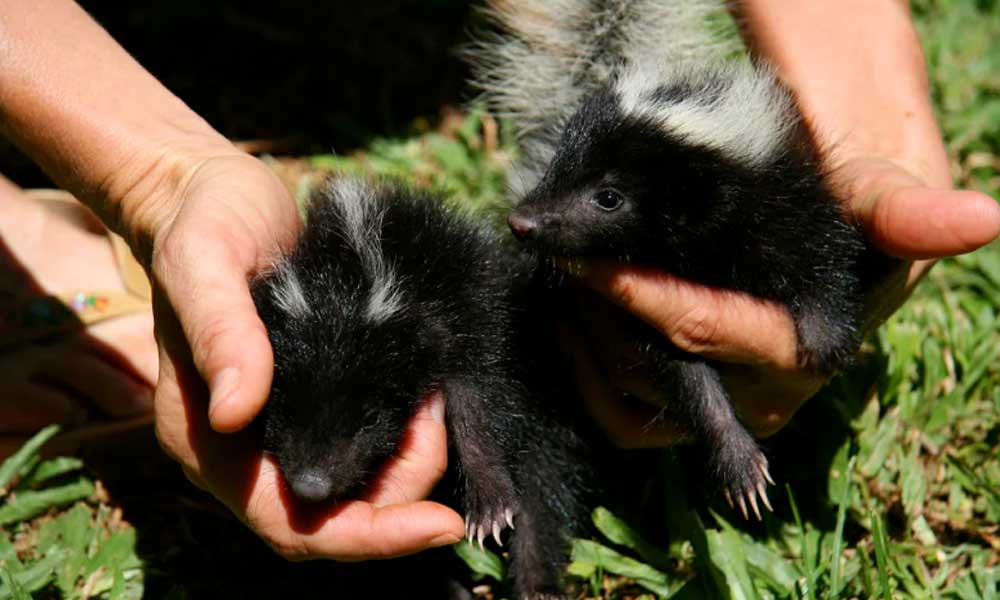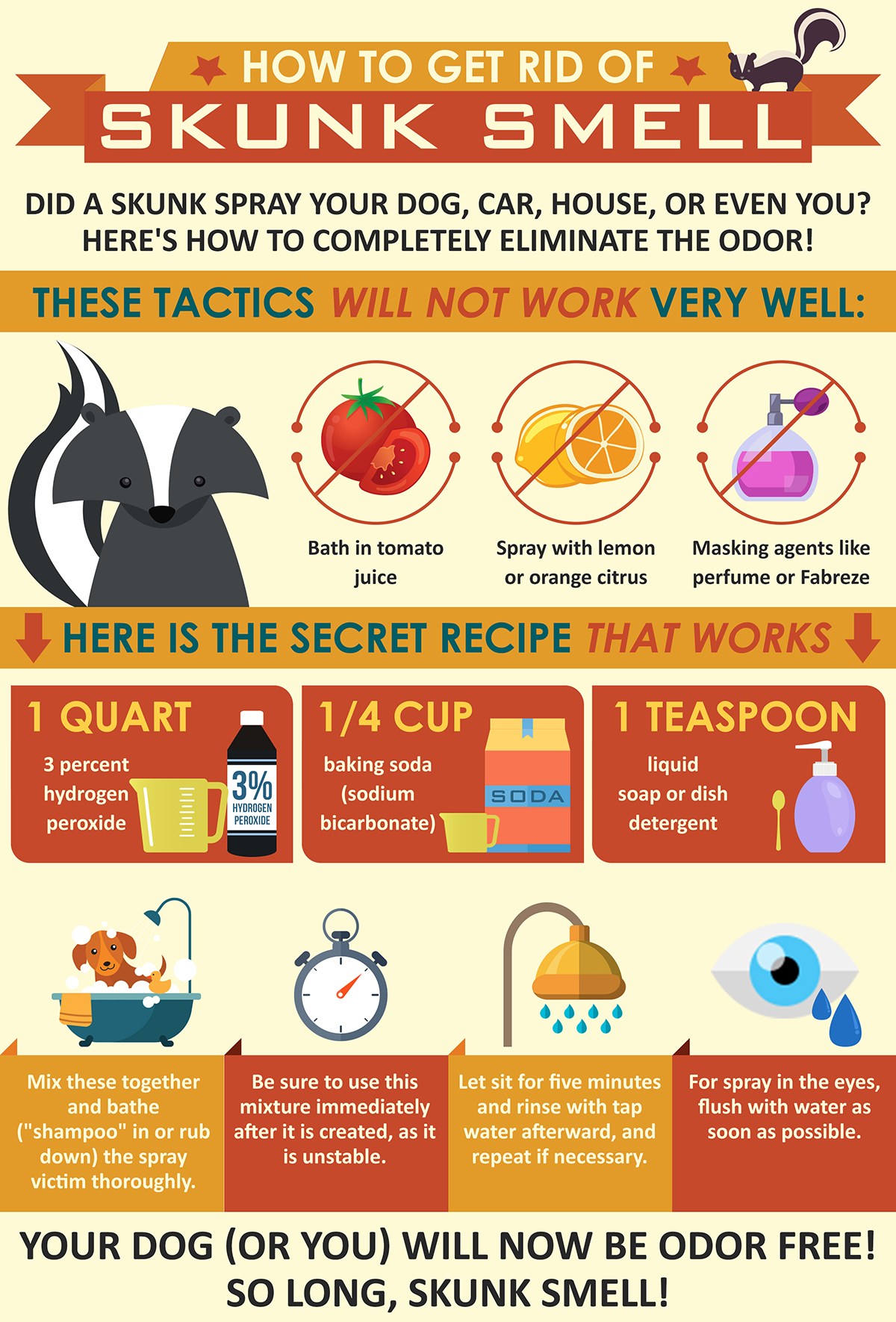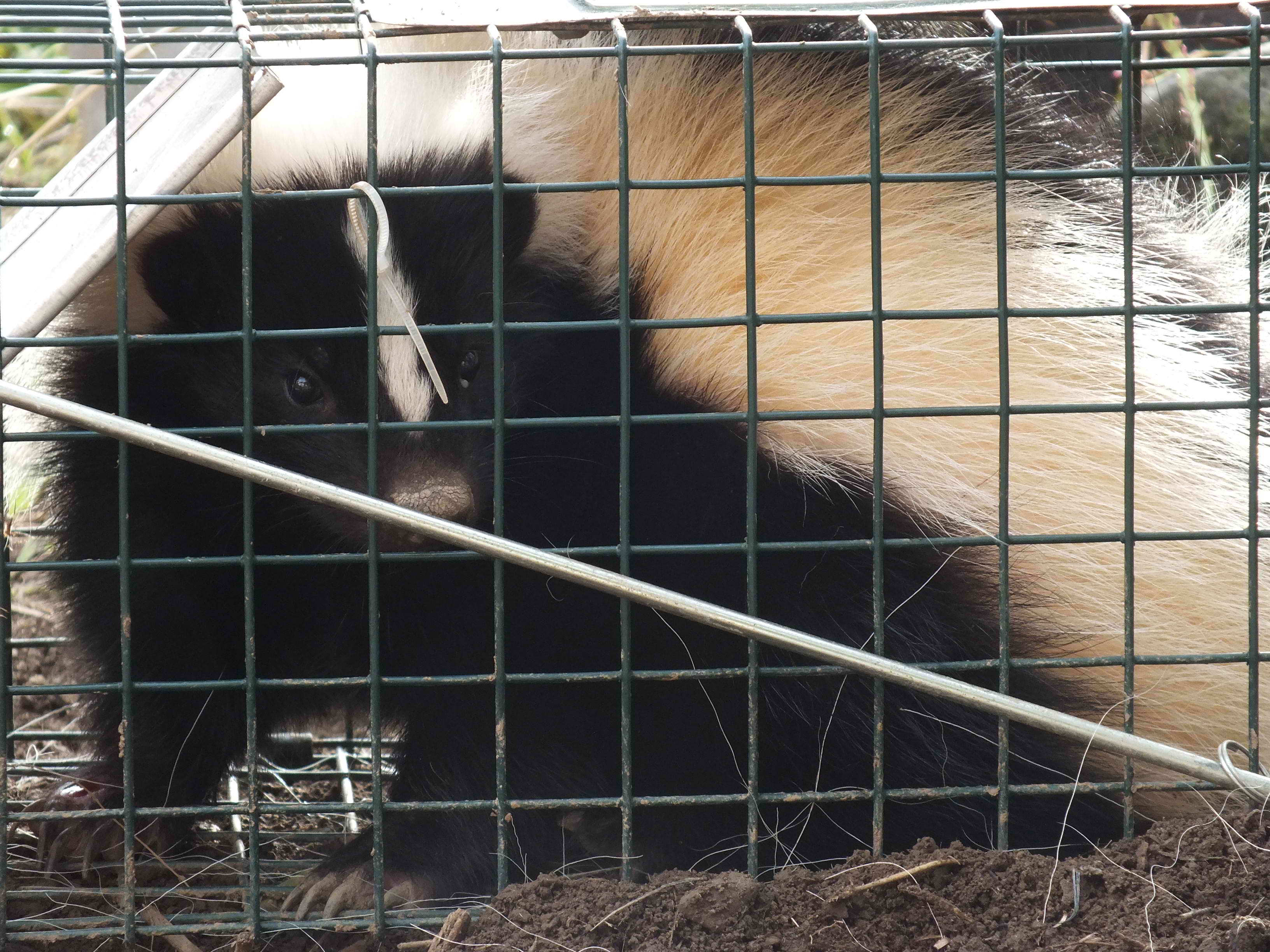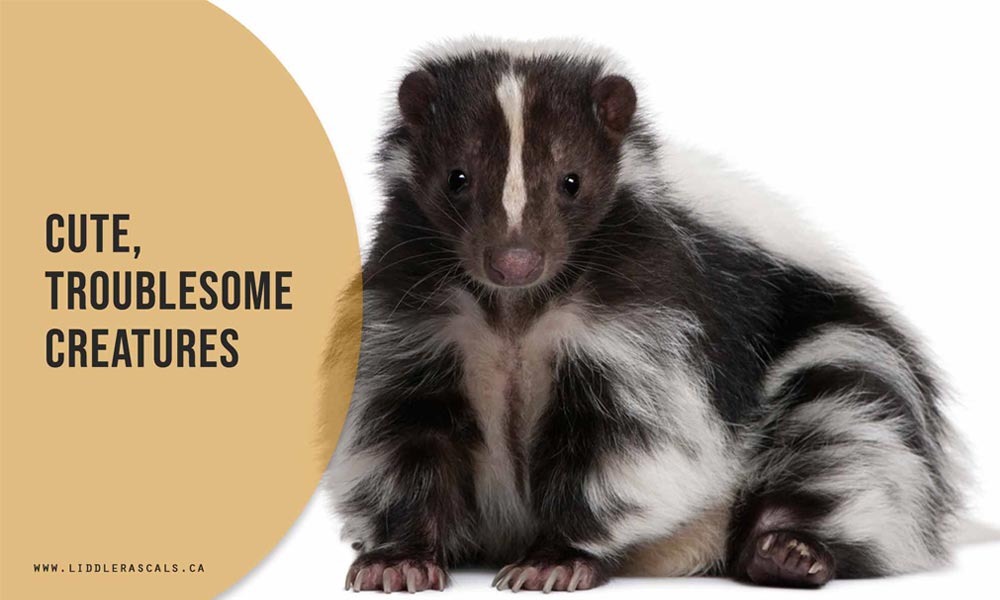
Cute but smelly
Have you seen a skunk outside your house lately? In most cases, this shouldn’t be a cause for concern. Skunks are nocturnal creatures and quite shy, so you won’t notice them as often as other wildlife. They are infamous for that foul odor they spray when frightened. If that recognizably robust smell gets into your eyes, however, it can cause major discomfort. Skunks also carry rabies, so it’s important that you deal with a possible infestation on your property by hiring a professional wildlife removal service.
Predators in your garden
Signs of a Skunk
Skunks provide quite a few benefits to the areas where they live, but the smell is sometimes too much, especially when they spray close to someone’s home. Most of the time, a homeowner would smell a skunk before seeing it. A persistent faint and musky odour – especially under a woodpile or building – may suggest that a skunk resides in it.
There are many other ways to tell if a skunk is living in your outdoor area, such as droppings, tracks, and evidence of digging. You may see small, shallow holes in your lawn made by skunks searching for grubs. Occasionally, you may find toppled plants or damage to the lower parts. If you have ripening garden crops, their fruit and flowers may be ravaged.
Don’t be fooled! Skunk and cat tracks look very similar.
Skunk tracks can be found in snow, dirt, or mud around feeding areas and den sites. The tracks look like cat prints except they show claw marks and five toes instead of four. Unlike cat prints (which are often on top of each other), skunk tracks are usually staggered.
Look for droppings near a den or where skunks have been feeding or digging. Their droppings also look like those of a cat’s and contain all types of food – from seeds or hair to insect skeletons.
Protecting Your Yard
Skunks are opportunists by nature. Low-hanging fruit, pet food, and garbage left out at night attract them. Other things that attract skunks are places or objects that would make convenient den sites, like elevated sheds, wood and rock piles, porches and crawl spaces, and openings under concrete slabs.
Removing attractants around your property may decrease the chances of an unpleasant skunk encounter. This includes covering window wells, securing trash, and removing food immediately after pets eat. If possible, feed your pets indoors.
When wet soil conditions push grubs close to the surface, skunks will dig for them in the grass. They may also wander into a shed or open garage, which is why you should secure all outer buildings on your property.
Skunks are opportunists
Prevent Skunks from Creating Nests
To prevent skunks from building a home on your property, inspect the perimeter surrounding your house or cottage. Carefully check any suspected skunk dens first before doing anything else. If you are not sure whether there are critters living in the hole, loosely fill it with leaves, crumpled paper, straw, or soil. If a skunk is indeed present, it will reopen the hole by pushing its way out overnight. If the plug you put in remains after two or three nights, it’s safe to assume the hole is unoccupied and can be filled. During the winter, skunks can stay inactive for longer periods so give them more time to disturb the plug before permanently blocking the den’s entrance. If a skunk is living in the den, immediately call an animal control expert for its safe removal and relocation.
If skunks are living in your garage, allow them to wander back out by leaving the door open before dusk and closing it later in the evening. This can sometimes be a solution to the problem. It is important to confirm the skunk has not been coming and going long enough to have established a den and given birth. Also check your garage for any accessible food (including dog or cat food or bird seed) and move it somewhere else or store it in tightly sealed containers.
Removal from a Window Well
Skunks have weak eyesight and are poor climbers, so it is not uncommon for them to get trapped in a window well or a similarly deep pit. If this happens, provide a way for them to escape. Place a rough board or material that can give the animal traction like chicken wire, carpet, or anything with cleats. The board must be long enough to serve as a ramp out of the well and should lean no steeper than a 45-degree angle.
Try to stay out of sight from the skunk as you lower the board slowly and carefully. If possible, have a second person watch the skunk from a vantage point high enough to see if it shows any signs of agitation.
Another option is to tie the board to the end of a long pole and lower it by holding the opposite side of the pole. Once the board is in place, let your household know the area is off limits until nightfall when the skunk leaves.
If the well is too steep for the skunk to climb out, a wildlife removal company in your area can do the job.

What to do if your pet gets sprayed. Credits: aaanimalcontrol.com
If You or your dog Gets Sprayed by a skunk
What happens when a skunk sprays your pet? The traditional remedy is a tomato juice and vinegar bath. However, this only reduces the stench and does not neutralize the molecules that make skunk spray particularly pungent. Here is an effective remedy that is safe for both humans and pets:
- ¼ cup baking soda
- 1 quart of 3 percent hydrogen peroxide
- 1 teaspoon liquid dishwashing soap
After the spraying occurs, wash with this solution immediately while wearing rubber gloves. Make sure it does not get into the eyes of your dog or cat, and do not store the mixture or make it ahead of time because it can explode if left in a bottle. Rub the mixture over the affected area and scrub deep to neutralize the scent. Be sure not to leave it on a pet for too long because it can bleach the fur. Once the solution has been thoroughly rinsed off, the smell should be gone. If you do not have baking soda, hydrogen peroxide, or dishwashing soap, using a solution of vinegar and water is another option.

Leave the caging and removal to experts
Credit: Bangor Daily News
In parts of North America, several bat species, raccoons, and skunks have variants of the rabies virus. In 1990, the raccoon rabies virus variant first circulated within the skunk population. A human can also contract rabies if bitten by an animal carrying the virus.
Having skunks removed from your property can help protect you from the threat of rabies. Though these critters can appear to be quite cute, take extra care to keep children or pets away from them. If any animal has bitten you or a member of your household, report the bite to Toronto Public Health. Wash the wound well with soap and water and call a doctor as soon as possible. Keep the animal in sight so it can be confined by authorities or a pest removal team.
If your dog got sprayed by a skunk in Toronto or the Greater Toronto Area, contact Liddle Rascals Wildlife Control. We offer skunk removal services that are safe and humane for both the residents and the animals in question. Our services include a thorough home inspection and advice on repairs, remedies, and prevention.
Expert Skunk and Wildlife Removal in the Greater Toronto Area
We are available 24 hours a day, seven days a week.
Call us at (416) 356-5886 or contact us online.






Leave a Reply
You must be logged in to post a comment.